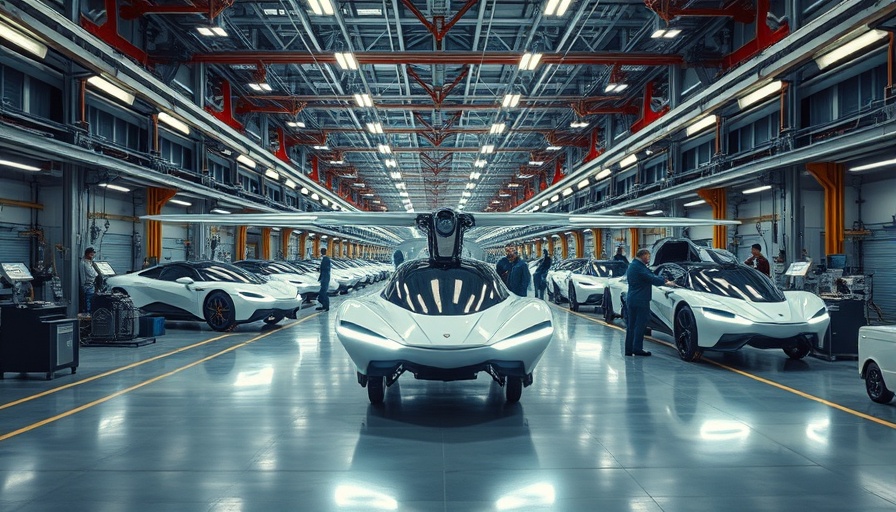
The Dawn of the Low-Altitude Economy
As China sets its sights on revolutionizing transportation, buzz around flying cars is reaching a fever pitch. With ambitious targets from domestic innovators like XPeng Motors, the country is positioning itself to lead in what's being termed the "low-altitude economy." This new frontier not only promises to streamline travel but also aims to boost economic connectivity across remote regions.
What Are Flying Cars and How Do They Work?
The "Land Aircraft Carrier," XPeng's groundbreaking vehicle, reimagines personal transportation by integrating a drone within the design of a six-wheeled van. This innovation allows passengers to switch seamlessly from driving to flying with minimal hassle. Users can simply drive to a designated take-off point, detach the drone, and soar above congested roads. Envisioning this landscape is not just futuristic—it’s incredibly practical, giving businesses and travelers faster access to underserved areas.
Regulatory Framework: A Must for Safety
For flying cars to take off in a meaningful way, comprehensive regulatory measures must be established. XPeng's founder, He Xiaopeng, emphasizes the need for a robust policy framework that includes pilot training systems and low-altitude air traffic management. As the first company to mass-produce these vehicles by 2026, XPeng is at the forefront of discussions with lawmakers to ensure that safety and efficiency go hand in hand with innovation.
Global Perspectives on Infrastructure Development
While China is sprinting ahead in the production and planning of flying cars, it raises questions on how other countries will respond. Nations that lag in regulatory and infrastructural planning risk being left behind. Countries in Africa, for instance, might see this technology as a game-changer for logistics managers and business travelers, facilitating quicker deliveries and better connectivity in regions where air travel is limited.
Conclusion: The Future of Travel is Here
The prospect of flying cars is not merely an exciting concept; it represents a significant advancement in transportation technology. As governments and businesses pivot toward the realities of this new market, the implications for aviation and logistics will be vast. By embracing innovative ideas like the Land Aircraft Carrier, the future of travel indeed seems to be at our fingertips. For those involved in airlines, logistics, and trade, keeping an eye on these developments is essential for adapting to future demands. Stay tuned for updates, and consider how this technological leap could shape your travel and business strategies in the coming years.
 Add Row
Add Row  Add
Add 




Write A Comment